Themed collection Density functional theory and its applications

Density functional theory and its applications
This themed collection is published in conjunction with the 15th International Conference on Density Functional Theory and its Applications.

Phys. Chem. Chem. Phys., 2014,16, 14333-14333
https://doi.org/10.1039/C4CP90074J
The derivative discontinuity of the exchange–correlation functional
Manifestations of the derivative discontinuity of the energy in density functional theory are demonstrated in simple systems in chemistry and physics.
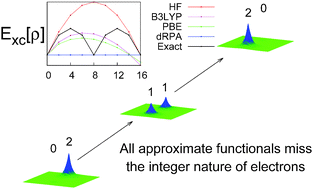
Phys. Chem. Chem. Phys., 2014,16, 14378-14387
https://doi.org/10.1039/C4CP01170H
Density functional tight binding: values of semi-empirical methods in an ab initio era
Semi-empirical (SE) methods are derived from Hartree–Fock (HF) or Density Functional Theory (DFT) by neglect and approximation of electronic integrals.
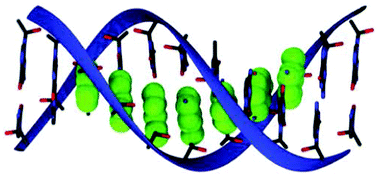
Phys. Chem. Chem. Phys., 2014,16, 14368-14377
https://doi.org/10.1039/C4CP00908H
One-electron self-interaction and the asymptotics of the Kohn–Sham potential: an impaired relation
The single-orbital-indicator τW/τ does not properly detect all one-orbital-regions.
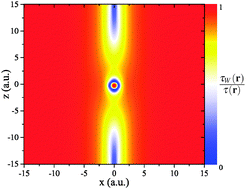
Phys. Chem. Chem. Phys., 2014,16, 14357-14367
https://doi.org/10.1039/C3CP55433C
Dye chemistry with time-dependent density functional theory
We present a representative panel of TD-DFT applications in the colour chemistry field.
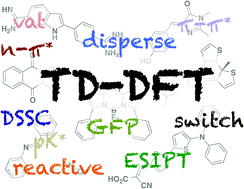
Phys. Chem. Chem. Phys., 2014,16, 14334-14356
https://doi.org/10.1039/C3CP55336A
Solvent effects on the intramolecular conversion of trimethylsulfonium chloride to dimethyl sulfide and methyl chloride
M05/6-311+G(2d,p) calculations reveal the role of ion pairs in the conversion of (CH3)3SCl as a function of solvent's permittivity.
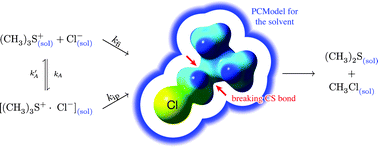
Phys. Chem. Chem. Phys., 2014,16, 26658-26671
https://doi.org/10.1039/C4CP03965C
Ligand field density functional theory for the prediction of future domestic lighting
A ligand field density functional theory model for two-open-shell f and d electrons.
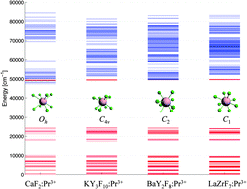
Phys. Chem. Chem. Phys., 2014,16, 14625-14634
https://doi.org/10.1039/C3CP55521F
Evaluating and interpreting the chemical relevance of the linear response kernel for atoms II: open shell
The atomic linear response function and its spin density analogue in a spin polarized conceptual density functional theory context.

Phys. Chem. Chem. Phys., 2014,16, 14614-14624
https://doi.org/10.1039/C4CP01331J
Density-functional description of electrides
Electrides are a unique class of ionic solids in which the anions are stoichiometrically replaced by electrons localised within the crystal voids. A systematic investigation of their electronic structure is conducted using density-functional theory.

Phys. Chem. Chem. Phys., 2014,16, 14584-14593
https://doi.org/10.1039/C3CP55533J
Density functional theory and Bader's atoms-in-molecules theory: towards a vivid dialogue
Mixed QTAIM-DFT energetic descriptors are powerful tools to characterize intramolecular bonds.
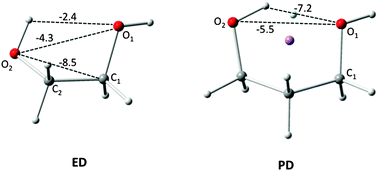
Phys. Chem. Chem. Phys., 2014,16, 14539-14550
https://doi.org/10.1039/C3CP55526G
Exchange–correlation functionals from the strong interaction limit of DFT: applications to model chemical systems
The strong-interaction limit of DFT provides an exchange–correlation potential that is able to describe strong correlation in 1D model chemical systems.

Phys. Chem. Chem. Phys., 2014,16, 14551-14558
https://doi.org/10.1039/C4CP00407H
Revisiting the density scaling of the non-interacting kinetic energy
Two different density scaling approaches are compared and their prospects for use in functional development are reviewed.
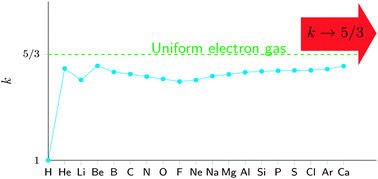
Phys. Chem. Chem. Phys., 2014,16, 14578-14583
https://doi.org/10.1039/C4CP00170B
An isomeric reaction benchmark set to test if the performance of state-of-the-art density functionals can be regarded as independent of the external potential
The adequacy of representative density functional approximations for reactions including heavy elements is tested.

Phys. Chem. Chem. Phys., 2014,16, 14559-14567
https://doi.org/10.1039/C4CP00772G
Polarizability of fullerene [2+2]-dimers: a DFT study
We have performed the first density-functional theory study on the polarizability of fullerene [2+2]-dimers (Cn)2 (n = 20, 24, 30, 36, 50, and 70) and shown that the exaltation of polarizability is typical for all the members of the fullerenes family.
![Graphical abstract: Polarizability of fullerene [2+2]-dimers: a DFT study](/en/Image/Get?imageInfo.ImageType=GA&imageInfo.ImageIdentifier.ManuscriptID=C3CP55528C&imageInfo.ImageIdentifier.Year=2014)
Phys. Chem. Chem. Phys., 2014,16, 14594-14600
https://doi.org/10.1039/C3CP55528C
ortho-Hydroxylation of aromatic acids by a non-heme FeV![[double bond, length as m-dash]](https://www.rsc.org/images/entities/char_e001.gif) O species: how important is the ligand design?
O species: how important is the ligand design?
The mechanisms of the ortho-hydroxylation reaction of benzoic acid with two iron-oxo species have been explored, highlighting the importance of ligand design to achieve greater reactivity for these species.
![Graphical abstract: ortho-Hydroxylation of aromatic acids by a non-heme FeV [[double bond, length as m-dash]] O species: how important is the ligand design?](/en/Image/Get?imageInfo.ImageType=GA&imageInfo.ImageIdentifier.ManuscriptID=C3CP55430A&imageInfo.ImageIdentifier.Year=2014)
Phys. Chem. Chem. Phys., 2014,16, 14601-14613
https://doi.org/10.1039/C3CP55430A
A third-generation density-functional-theory-based method for calculating canonical molecular orbitals of large molecules
A new canonical MO calculation approach (right) based on DFT for large systems is proposed. The approach leads to high computation efficiency in massively distributed memory parallel computers.

Phys. Chem. Chem. Phys., 2014,16, 14496-14503
https://doi.org/10.1039/C3CP55514C
Optical spectrum, perceived color, refractive index, and non-adiabatic dynamics of the photochromic diarylethene CMTE
A comprehensive study of the photochromic diarylethene CMTE is presented, including optical absorption, perceived color, refractive index, and reaction dynamics with non-adiabatic ab initio molecular dynamics.

Phys. Chem. Chem. Phys., 2014,16, 14531-14538
https://doi.org/10.1039/C3CP55490B
Predicting phosphorescent lifetimes and zero-field splitting of organometallic complexes with time-dependent density functional theory including spin–orbit coupling
Experimental phosphorescent lifetimes for various organometallic complexes are well reproduced by spin–orbit coupling TDDFT calculations with a continuum solvation model.
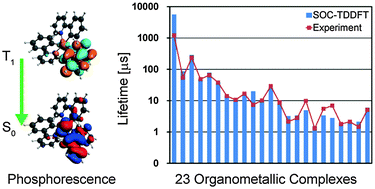
Phys. Chem. Chem. Phys., 2014,16, 14523-14530
https://doi.org/10.1039/C3CP55438D
Influence of intermolecular interactions on solid state luminescence of imidazopyridines: theoretical interpretations using FMO-TDDFT and ONIOM approaches
The polymorph-dependent luminescence of 6CN-HPIP in the solid state was computationally examined using the fragment molecular orbital method.
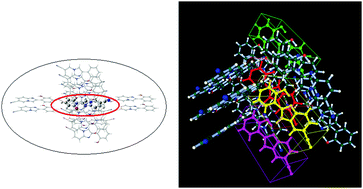
Phys. Chem. Chem. Phys., 2014,16, 14388-14395
https://doi.org/10.1039/C3CP55461A
Challenging adiabatic time-dependent density functional theory with a Hubbard dimer: the case of time-resolved long-range charge transfer
Adiabatic TDDFT fails for time-resolved charge-transfer in a simple model, even when linear response spectra is accurate.

Phys. Chem. Chem. Phys., 2014,16, 14504-14513
https://doi.org/10.1039/C4CP00118D
A density functional study of the spin state energetics of polypyrazolylborato complexes of first-row transition metals
The influence of substituents, Jahn–Teller distortions, and transition-metals on the spin-state preferences of scorpionate complexes through (multi-determinant) density functional theory.
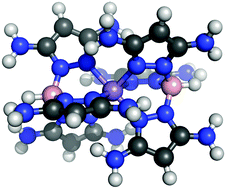
Phys. Chem. Chem. Phys., 2014,16, 14514-14522
https://doi.org/10.1039/C3CP55488K
Magnetic exchange in {GdIII–radical} complexes: method assessment, mechanism of coupling and magneto-structural correlations
Which functional is best suit to calculate Js in lanthanide–radical pairs?
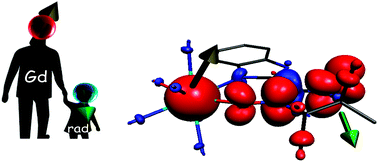
Phys. Chem. Chem. Phys., 2014,16, 14568-14577
https://doi.org/10.1039/C4CP00214H
Computational screening of structural and compositional factors for electrically conductive coordination polymers
We test a range of building blocks and connectivity for the construction of electroactive metal–organic frameworks.
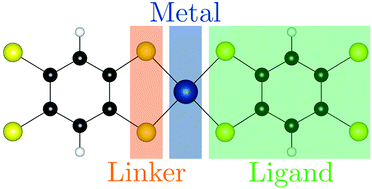
Phys. Chem. Chem. Phys., 2014,16, 14463-14472
https://doi.org/10.1039/C4CP00008K
Exploring the structure–aromaticity relationship in Hückel and Möbius N-fused pentaphyrins using DFT
Fine-tuning of the molecular topology and macrocyclic aromaticity of N-fused pentaphyrins by changing the number of π electrons and meso-substituents.
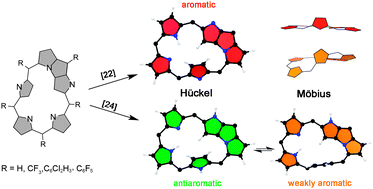
Phys. Chem. Chem. Phys., 2014,16, 14396-14407
https://doi.org/10.1039/C3CP55509G
Unusual electronic properties and transmission in hexagonal SiB monolayers
Electron transport in an h-SiB monolayer subject to an external bias of 1 V.

Phys. Chem. Chem. Phys., 2014,16, 14473-14478
https://doi.org/10.1039/C3CP55235G
Revisiting the role of exact exchange in DFT spin-state energetics of transition metal complexes
Sensitivity of DFT spin-state energetics to exact exchange is rooted in the description of metal–ligand bonding.

Phys. Chem. Chem. Phys., 2014,16, 14479-14488
https://doi.org/10.1039/C3CP55506B
Photo-active and dynamical properties of hematite (Fe2O3)–water interfaces: an experimental and theoretical study
In addition, the photo-electrochemical water-splitting process (i.e., generation of H2 and O2) on the electrode–water interface has been verified experimentally in the presence of simulated sunlight (pictured).

Phys. Chem. Chem. Phys., 2014,16, 14445-14454
https://doi.org/10.1039/C3CP54700K
Modelling excited states of weakly bound complexes with density functional theory
Different dispersion correction parameters are required to describe the interaction when the molecule is in an excited Rydberg state.

Phys. Chem. Chem. Phys., 2014,16, 14455-14462
https://doi.org/10.1039/C3CP55361B
Using the reaction force and the reaction electronic flux on the proton transfer of formamide derived systems
Reaction force and reaction flux fragmentation allow us to identify the specific electronic events that take place along the reaction coordinate.

Phys. Chem. Chem. Phys., 2014,16, 14489-14495
https://doi.org/10.1039/C3CP55159H
The nature of vertical excited states of dyes containing metals for DSSC applications: insights from TD-DFT and density based indexes
Transition metal complexes, typically Ru-based complexes, are the most efficient dyes used in dye-sensitized solar cells.
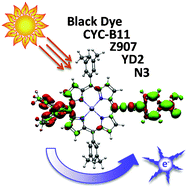
Phys. Chem. Chem. Phys., 2014,16, 14435-14444
https://doi.org/10.1039/C3CP55032J
Atomic electron affinities and the role of symmetry between electron addition and subtraction in a corrected Koopmans approach
The essential aspects of zero-temperature grand- canonical ensemble density-functional theory are reviewed and used to highlight the assumption of symmetry between electron addition and subtraction that underlies the corrected Koopmans approach of Tozer and De Proft (TDP) for computing electron affinities.
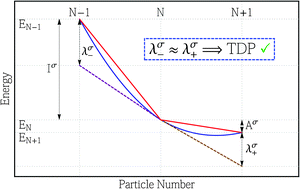
Phys. Chem. Chem. Phys., 2014,16, 14420-14434
https://doi.org/10.1039/C3CP54528H
Excited states using the simplified Tamm–Dancoff-Approach for range-separated hybrid density functionals: development and application
The sTDA method is extended to range-separated hybrid density functionals to compute both CT and valence excitations in very large molecular systems with good accuracy.
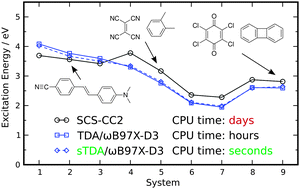
Phys. Chem. Chem. Phys., 2014,16, 14408-14419
https://doi.org/10.1039/C3CP54517B
About this collection
This issue is published in conjunction with the 15th International Conference on Density Functional Theory and its Applications (DFT2013) which took placed in Durham, UK, September 2013. The themed issue covers recent developments in Density Functional Theory with a balance between theory and applications, and comprises of both upcoming and established researchers.
The guest editors of the issue are David Tozer (Durham University, UK) and Michael Peach (Lancaster University, UK)